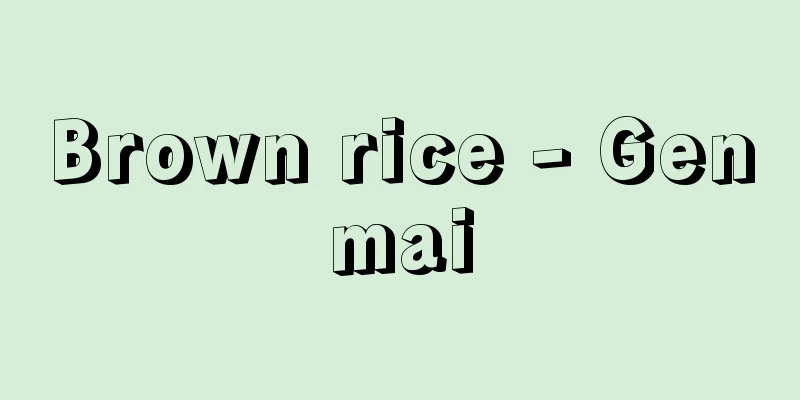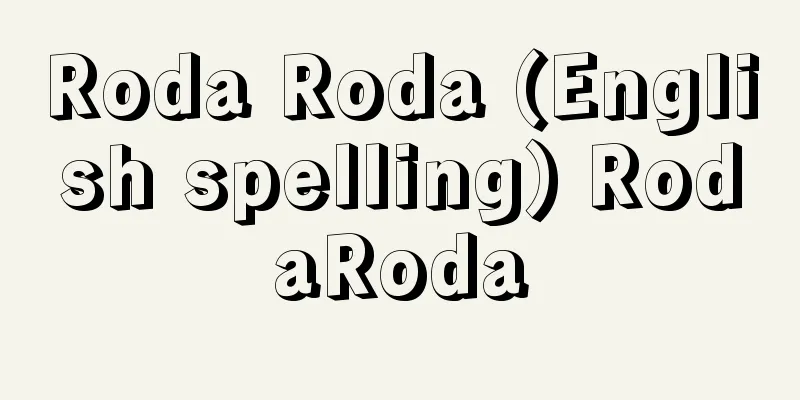Brown rice - Genmai

|
This refers to unpolished rice with only the husk removed. In contrast to white rice, which is made by removing the germ and bran layers from brown rice and collecting the endosperm, black rice was called "kurogome" due to its color and luster. The character for "black" in this word is "gen." In Japan, except for large factories (where the unpolished rice is stored in silos and then polished to white rice), brown rice is generally packed in bags at the production site and stored and transported as brown rice. Brown rice is less susceptible to insect and microbial damage than white rice, and has good storage properties. However, the fat in the germ is broken down by lipase and can go rancid, which can cause a loss of flavor. Brown rice is more nutritionally sound than white rice, containing more protein (6.8 grams per 100 grams), lipids (2.7 grams per 100 grams), minerals (650 milligrams per 100 grams), vitamin B1 (0.41 milligrams per 100 grams), and dietary fiber (3.0 grams per 100 grams). However, when cooked in the same way as white rice, water absorption and starch gelatinization do not occur sufficiently, and digestion and absorption are poorer than with white rice. Nevertheless, brown rice is attracting attention as a source of minerals, vitamins, and dietary fiber. Cooking brown rice at normal pressure does not produce tasty rice, even if it is cooked twice, and requires special equipment such as a pressure cooker. In other words, tasty brown rice can be made by allowing it to absorb enough water and then cooking it at a water weight ratio of 1.6 to 2.0 at 110 to 120°C. Processed brown rice that has been puffed so that it can be cooked at normal pressure is also available on the market. In this case, somewhat more water is needed than for white rice. Furthermore, brown rice porridge and germinated brown rice are also available on the market as processed foods. [Fuwa Eiji] [Reference] | |Brown rice: Unhulled rice with the husk removed. 70% polished rice: Rice with 70% of the germ and bran layer removed during polishing removed. Polished rice: Rice with the germ and bran layer completely removed. *All photos are of non-glutinous rice ©Shogakukan "> Types of rice kernels ©Shogakukan "> Types of rice Source: Shogakukan Encyclopedia Nipponica About Encyclopedia Nipponica Information | Legend |
|
籾(もみ)米から籾殻のみを除いた精白していない米をいう。玄米から胚芽(はいが)と糠(ぬか)層を除いて胚乳を集めたものである白米に対し、色・光沢から「黒米(くろごめ)」とよばれた。この黒に相当する字が玄である。日本では大型工場(サイロで籾米貯蔵後、白米に精白)以外は生産地で玄米として袋詰めし、米の貯蔵、輸送は玄米で行われるのが主流である。玄米は白米より虫害や微生物の害も受けにくく、貯蔵性がよい。しかし胚芽中の脂肪がリパーゼで分解されて酸敗することにより、風味が落ちる場合がある。玄米はタンパク質(100グラム中6.8グラム)、脂質(同2.7グラム)、無機質(同650ミリグラム)、ビタミンB1(同0.41ミリグラム)、食物繊維(同3.0グラム)の含量が白米より多く栄養的に良好である。しかし白米と同じような方法で炊飯すると、吸水、デンプンの糊化(こか)が十分行われず、消化、吸収は白米より悪い。それでも玄米食は無機質、ビタミンおよび食物繊維の供給源として関心を集めている。 玄米の炊飯は、常圧では、二度炊きしてもなかなかおいしいご飯になりにくく、圧力釜(がま)などの特殊な器具を必要とする。すなわち、十分吸水させたのち加水重量比1.6~2.0、110~120℃で炊飯すればおいしい玄米飯ができる。また玄米にパフ(膨化)加工を施して常圧で炊飯できるようにした加工玄米が市販されている。この場合炊飯には白米よりいくぶん多めの水加減が必要である。さらに玄米粥(がゆ)や発芽玄米も加工食品として市販されている。 [不破英次] [参照項目] | |玄米:籾(籾米)から籾殻を除いたもの七分搗き米:精白によって除かれる胚芽と糠層部分の70%を除いたもの精白米:胚芽と糠層を完全に除いたもの※写真はすべて粳米©Shogakukan"> 米の穀粒の種類 ©Shogakukan"> 米の種類 出典 小学館 日本大百科全書(ニッポニカ)日本大百科全書(ニッポニカ)について 情報 | 凡例 |
Recommend
Arjuna Wihwaha
...The style became more formal, and the reliefs,...
Fuda
The name was inherited by the current Futa area of...
Dionysios Halikarnasseus
Greek rhetorician and historian of the late 1st ce...
Planocera pellucida (English spelling) Planocerapellucida
... Flatworms commonly found in the intertidal zo...
Luang Prabang (English spelling)
A city in northern Laos. It is a river port city o...
籀文 - Chubun
〘Noun〙 A style of Chinese writing. It is said to h...
Modern Domestic Work - Kindaiteikinairoudou
…In the early days of capitalism, home labor was ...
Confucian scholars' history
A novel from the Qing dynasty in China. Written b...
Numbat (English spelling)
Also known as the giant larva. A marsupial mammal ...
Sharp Turn - Kyusenkai
[noun] (suru) When an aircraft, ship, etc. changes...
Oita - Gyudai
...There are various theories about the origin of...
Autobrecciated lava
The broken parts of lava flow that occur during it...
Tadaoki Hosokawa
Year of death: 2nd December 1646 (18th January 164...
Merger ratio - Gappei Hiritsu
This refers to the allocation ratio of shares issu...
Green lacewing (smelly dragonfly)
A general term for insects belonging to the family...









